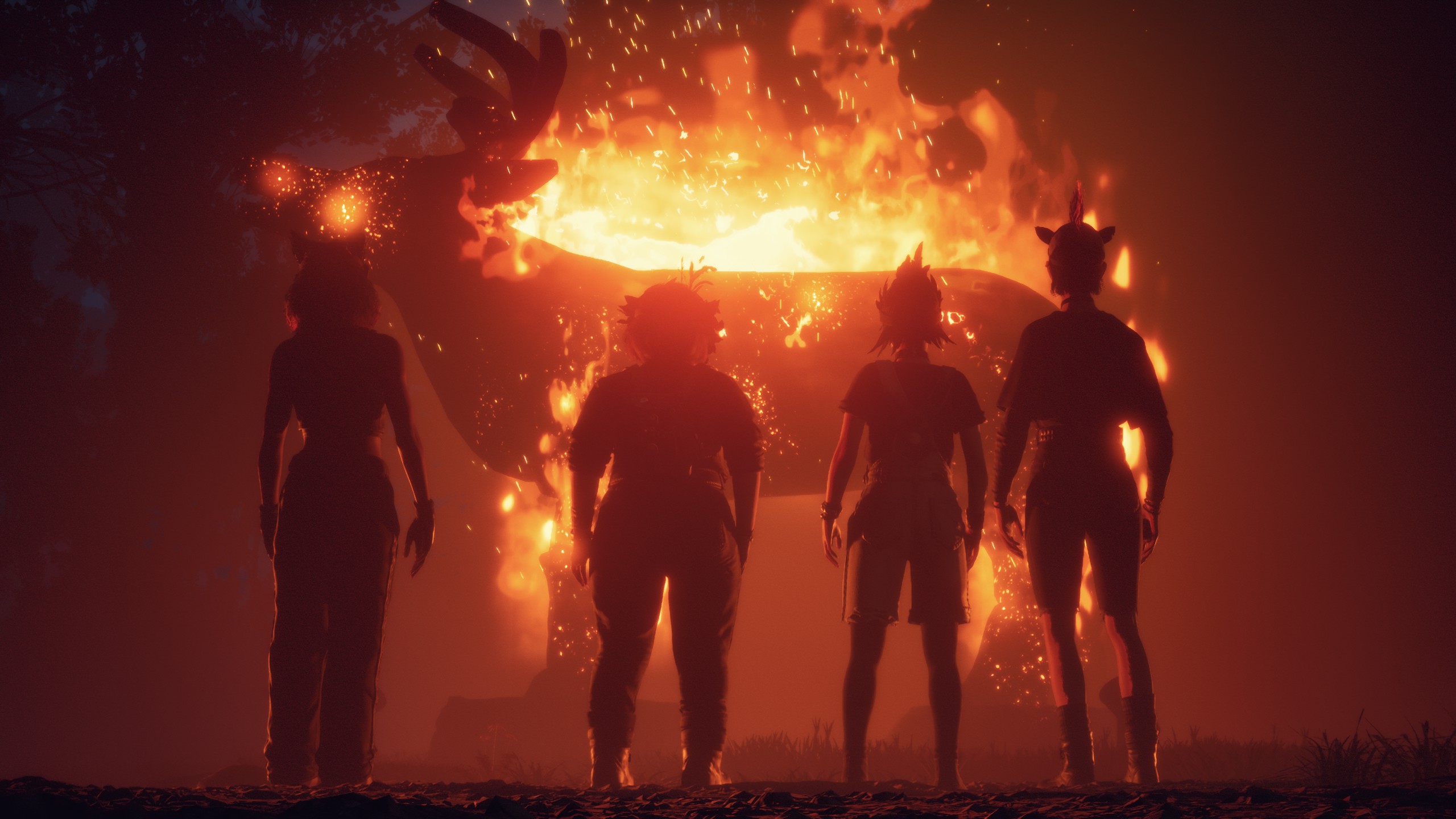Diablo III feature: Blizzard's plans to satisfy their fanbase and still deliver a fresh experience
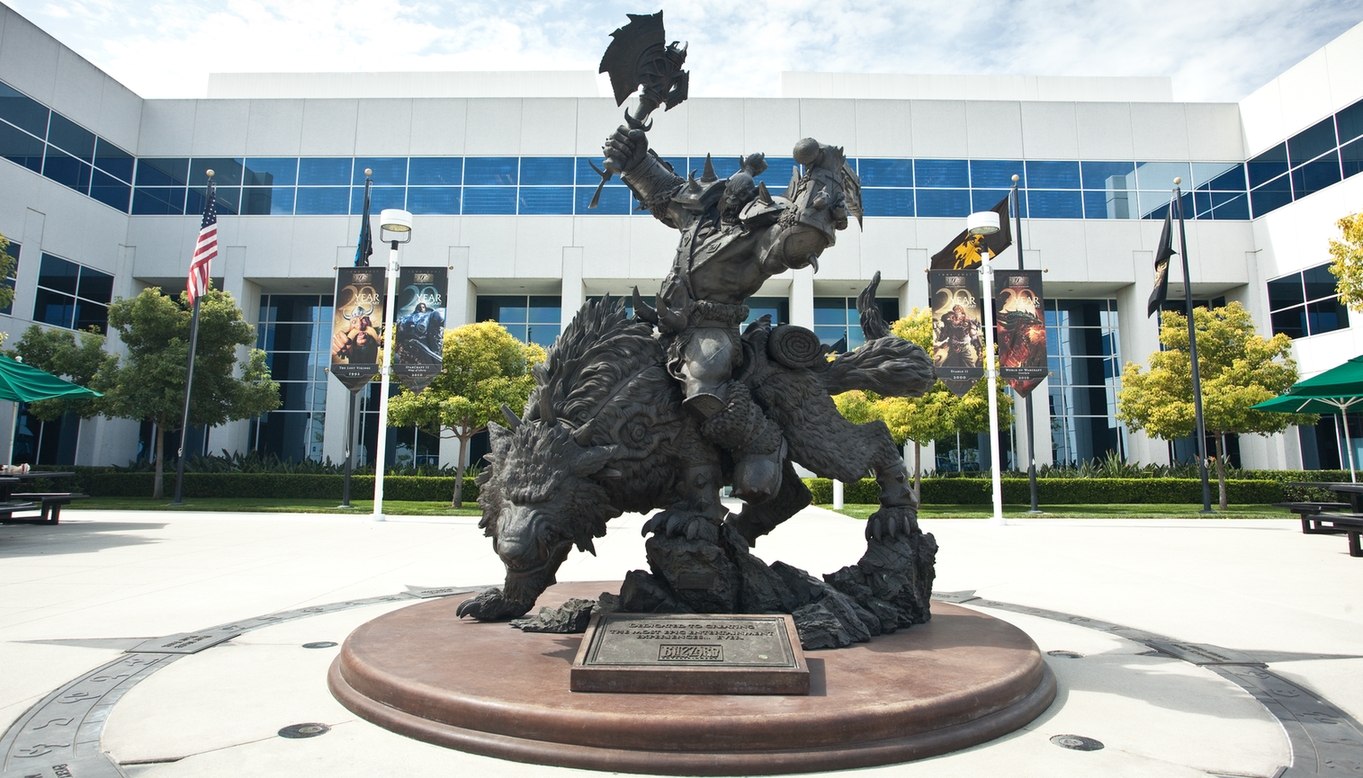
Waiting in the lobby of Blizzard's Irvine headquarters, I was overcome by nostalgic reverence. Where most businesses have a mountain of months-old magazines, Blizzard has a museum. It was nothing too extravagant, mind you, but the frames lining the walls were like windows to my childhood. Each piece of classic Diablo art conjured up fond memories of the franchise that's marking its 15th birthday this November.
It wasn't always this way, however. Blizzard certainly didn't begin its existence as a gaming giant responsible for both this generation's Dungeons & Dragons and the game that has become South Korea's national sport. Over the years, the company has seen both growth spurts and growing pains, both successes and, er, whatever Warcraft Adventures was. Many incredibly talented people have come and gone.
This is the environment Diablo III has evolved in. To track its development is to see a balancing act made all the more precarious by countless shifts and upheavals. One thing, however, has always remained constant: fandom. I'm not just referring to Diablo's near-militant community—Diablo's story is one of diehard dedication on both sides of the table. Most of the original Diablo team, you see, is now gone. In its place is a band of folks who grew up playing Diablo and Diablo II as fans, just like you or I. Now they're shaping the franchise's present and future, but—thanks to that ridiculously passionate community—they're also trying their damndest to avoid losing sight of the past.
“When we started, we really inherited this big scary game,” explained game director Jay Wilson. “There are very few of us who actually worked on the previous Diablo games, so a lot of us came at it more as fans. When you're building something that you didn't originate, the struggle that you have is, how do you remain true to it while also being true to your own creative nature? If you make something, you can't just copy. You have to infuse it with your own personality, your own interests, your own opinions, your own desires. If you don't, then it will be soulless.”
It almost seems fitting—a game about, you know, the devil that sells its own soul. Sorry, though, Satan: this just isn't your day.
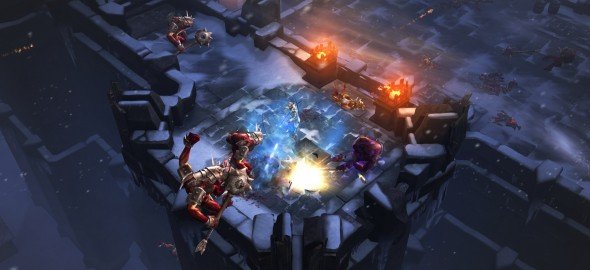
In the beginning
Everybody's had those first moments with a new game that really define the entire experience. Diablo III's origins, then, lie not in some linear extension of the original Diablo's creative vision, but in those player-driven experiences. Hearing Wilson describe his love affair with the first Diablo drove that point home.
The biggest gaming news, reviews and hardware deals
Keep up to date with the most important stories and the best deals, as picked by the PC Gamer team.
“It was when I bought Warcraft II,” he said. “On the back of the CD case they had an ad for Diablo. It had a picture of the warrior with his sword and shield, standing in front of the church door with the red light streaming out of it. That image was so compelling to me that I wanted to play that game. I didn't even know what it was and I wanted to play it. I remember, back then there was so little information. You just didn't know a lot about games before they came out. So to have an image so compel me, I always remember that.
“The day I installed it, I told my wife 'You need to leave the house, because it's Diablo time now.' 'Diablo' spoken in hushed tones. And it was all the classic moments: the first encounter with the butcher, the first encounter with the Skeleton King, the first time a hundred goatmen come running at you and you manage to survive by the skin of your teeth. The first time you griefed somebody who was your teammate. There are all those great moments that I think everyone had.”
Hindsight, however, stops being 20/20 when rose-tinted glasses are involved. For Wilson and the rest of Diablo III's development team, avoiding that trap is the biggest challenge. When is it appropriate to give diehard fans precisely what they want? And—perhaps more importantly—when do you fire back with a stern “No”?
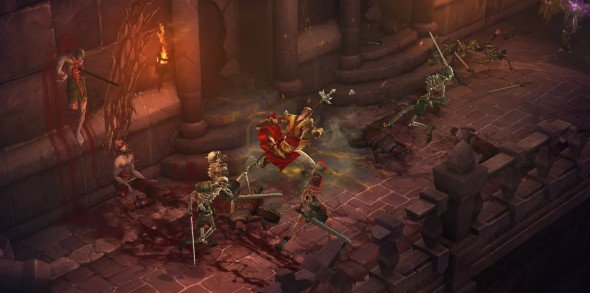
“The first [change in Diablo II] was the expansion of the world,” said Wilson, giving an example. “The fact that they took the world beyond Gothic dungeons—that opened up the world. It guaranteed that Diablo wouldn't be a one-note franchise. What's interesting is at the time, that was just as controversial as when we started showing off Diablo III and people grumbled about the art. Most don't remember that people did the exact same grumbling about Diablo II the first time they saw the deserts. It's important to push the boundaries a little bit, or it becomes too small to hold your interest for very long.”
Similarly, some of Diablo II's craftier players even managed to create their own non-gold-based economic system and a series of unspoken rules governing things like PvP. A miniature culture arose, and many players had a very personal stake in it. Naturally, things like Diablo III's auction house and always-online requirement strike these fans as utter blasphemy. Those same fans, however, fail to remember precisely why they had to carve out their own makeshift online society in the first place.
Wilson explained, “The truth is, the player-based economy developed to overcome what was essentially a flaw in the game. When we look back on those things, we look back on them with fondness. 'Like, wow, remember how screwed up that was that we had to use Stone of Jordans to trade for stuff?' We forget that the start of that sentence was 'Remember how screwed up that was?' I don't think the community was defined by those things. I think you have a very small group of people who have fond memories and think that those specific memories were more defining for Diablo than they actually were.”
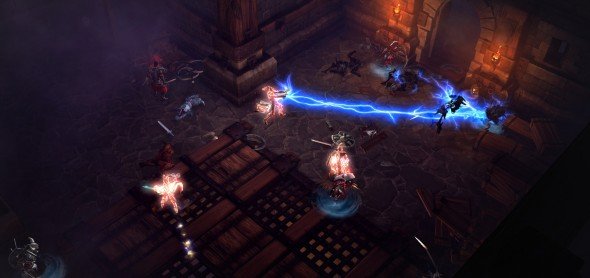
Don't call it Diablo 2.5
Wilson and Co. have a vision. It's not like they don't know what they're doing. So what exactly then is the hold-up? Why didn't the figurative Horadric Cube spit this thing out years ago? Well, for all Diablo's click-click-click straightforwardness, its development process has been anything but. And no one ever said this was the first Diablo III.
“The [first version of Diablo III] that I saw was trapped in the exact place that I was concerned about us not going; it didn't feel like much of an evolution from Diablo II,” Wilson admitted. “I think there was more concern about being 'true to Diablo' than there was about being fresh and interesting. There was a lot of really good stuff in it, though. A lot of it did go into the current Diablo III in one way or another. There was some great monster design. There was a boss fight in the old build that we've struggled to get as good as it was in that build. But it lacked that high-level feel of identity. People would look at it and say that it felt like Diablo 2.5. That's not the Blizzard way.”
So then, what is the Blizzard way? What makes Diablo III tick? Truth be told, the development team didn't even know—at first. The best way to learn, however, is by doing, so do they did. The end result? Diablo III finally took on a life of its own.
“One of the biggest moments was when we developed the wizard,” said Wilson. “The wizard really gave us some opportunities to be really out there in a way that we hadn't been with the barbarian. We just started to do all these crazy ideas that were based more in classic pen-and-paper role-playing games, and also played into over-the-top kills and combat that the team liked from fighting games and first-person shooters. It was a time when we got to fuse those things together, and it was the first time that the personality of the team made something that felt like Diablo, but also felt really unique.
When we got to take that class and put it in front of the company, that was the first point where the company as a whole looked at the game and said, 'OK, you guys have figured it out now. You're not just exploring what Diablo's going to be; you've figured it out.'”
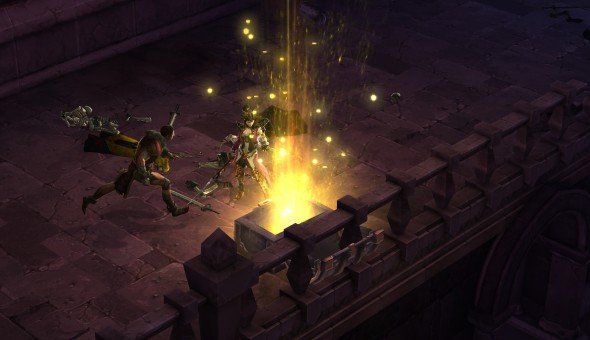
And then it was smooth sailing off into a warm sunset, right? If only. Game development is never a cakewalk, and that goes double when you're walking the almost impossibly fine line the Diablo team is. What ultimately mattered most was picking a direction and sticking to it—come hell, high water, or incredibly tempting ideas based on X-Men comics.
“Early on, we actually even explored concepts—this is going to sound crazy—like if the demon hunter could climb on the barbarian's shoulders and shoot from there,” enthused senior technical game designer Wyatt Cheng. “Or you have that classic image of Colossus throwing Wolverine, what is it, the Fastball Special? So what if the barbarian could pick up the monk and throw the monk? Each of those things that we implemented would've been something that a designer and an artist thought of and would look super awesome, but that everyone would have to do. You'd be limited by what we came up with.”
Ultimately, then, that's what—according to the team—defines the franchise above all else. Other games throw in the kitchen sink without a second thought because, hell, why wouldn't you do that? Who doesn't love sinks? Meanwhile, Diablo slices and dices its perfectly sized portion of action with hours-long meetings.
“I spent probably four hours discussing with a programmer what happens when I have Magic Missile on my left mouse button, Arcane Orb on my right mouse button, and Wave of Force in my hot bar, and I hit all three at the same time, and then I keep hitting Magic Missile and I keep hitting Wave of Force, but Wave of Force is now in cooldown,” rattled off Cheng, barely stopping to breathe. “To spend four hours discussing something so minute—and we have hundreds of those types of discussions—is ultimately what polish is all about.
“We love crafting our game. It doesn't get tedious for us, because different isn't better, better is better. If we take an idea that's been done before, but it's buried in some mud and dust and we crack off the mud and we dust it off, you have a diamond, right? It doesn't really have value until it's that shining diamond.”
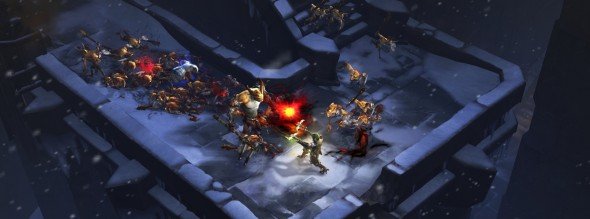
Shine on, you crazy demon
There's finally a light at the end of the tunnel. Though it may feel like you still have an eternity-long wait ahead of you, early 2012 is just around the corner. For both creators and fans alike, it's been a positively nail-biting process, but for Blizzard, the launch of a game is only the beginning. In some form or another, Diablo III will probably live long enough to see the actual End Times.
“We intend to support this game for years and years and years. As long as people are playing it and buying it, we're going to be supporting it,” said senior producer Alex Mayberry. “I think all things are on the table. We are going to have updates, we will have patches, we'll fix bugs. I don't know exactly what model we're going to use yet and how deep we're going to go on those updates. I doubt that we would go as far as World of Warcraft does with some of their content, but that all remains to be seen. Step one, let's get the prime game out and we'll figure that stuff out soon.”
In spite of Mayberry's words, though, Blizzard has already got a few rather gigantic ideas percolating around in its collective noggin. For one, the developer's done everything short of announcing that there will be a console adaptation of the series. Unless it pulls another StarCraft: Ghost, it's only a matter of time. That said, the franchise hasn't forgotten its heritage.
Mayberry explained, “We are still experimenting in that space. We're going to make sure that, as we progress with this experiment, we maintain what Diablo is. So yeah, I don't see it changing our focus. I just see it adding. It's [another] medium that we can put the game on. We want to give console players the Diablo experience as well. But our leading platform is always the PC.”
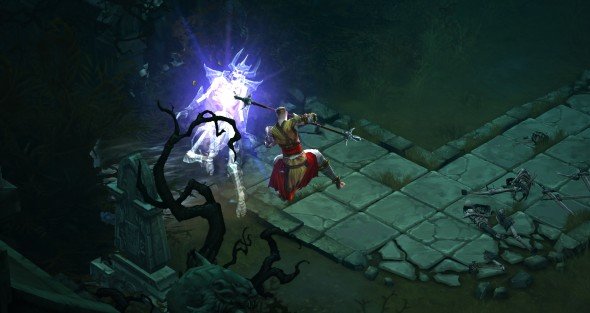
Meanwhile on PC, Diablo III's always-online multiplayer focus and auction house aren't exactly subtle about their main inspiration. So then, the perhaps multi-billion-dollar question: Is a Diablo MMO the next giant leap for Blizzard's not-so-small hack-n-slash?
“I don't think the world of Diablo II is diverse or varied enough to support, say, an MMO,” Wilson said. “And we don't currently have plans for an MMO in the Diablo world, but my goal was that at the end of Diablo III, if that was something that we wanted to do, we'd feel like the world now could support it. I can say that the team really loves the Diablo universe, and it would be nice if whatever game we decide we want to make next, we decided was appropriate for that universe. It could be an MMO, it could be an RTS, it could be a third-person action game, it could be any variety of different things.
“I think the worst curse that can happen to a game universe is that it becomes so associated with a certain game type that the universe itself and the game are indistinguishable from each other,” Wilson continued. “What we'd really like is to feel that the Diablo universe is diverse and interesting enough that you could put a whole bunch of different kinds of games in it—that the universe itself would live as its own entity. That's what we're more interested in. If we're going to keep this universe, let's make it a universe where we can do almost anything we want.”

